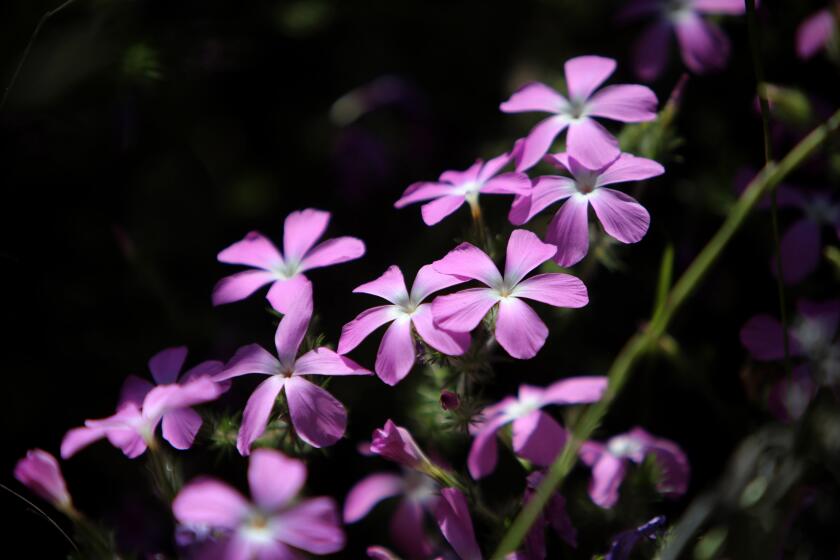GARDENING : Tone Down Beds With Monochromatic Flowers
Do you want your flower beds to make a statement? Rather than worrying about whether the color of one flower will clash with another, you can choose a variety of flowers that are the same color.
The hardest part may be choosing and sticking to just one color, but it’s a good idea to choose outdoor colors that complement your home’s interior colors. You can, of course, have several beds of colors throughout the yard, separated or subtly blended for a rainbow effect. Betty Barr Mackey, co-author of “The Gardener’s Home Companion” has several tips for planning your one-color flower bed:
* “Be careful with pinks,” she says. “It is best to separate the hot pinks--those with orange in the shading--from cool pinks with a tint of blue. The same is true with reds.”
* Blues and purples look good in beds that are near each other, because they tend to blend into the foliage for a subtle shift of color. White flowers, on the other hand, will light up shady areas and are especially delightful beside a patio, deck or porch where you sit at night.
* “Also, vary your textures by including some shiny flowers, some dull ones and varied foliage textures as well,” Mackey says. She also suggests using a variety of shapes, with some spike flowers such as snapdragons, some open and simple daisy types and some with many petals, such as roses.
* Mackey uses a base of perennial plants and adds annuals between for a profusion of bloom. With bedding plants already in bloom, you can be assured of the exact colors. When choosing color companions for a specific plant, take a flower from the plant with you to the nursery.
Ellen Henke, known as “the Plant Doctor” on California radio and television, suggests cutting pictures of flowers out of old catalogues and moving them around on your paper garden plan until you come up with a combination that pleases you. Remember to consider the flowers’ season of bloom. Tulips and mums will not be blooming at the same time, but petunias and mums will. Try to have plenty of color for every season.
To prepare the soil, Mackey uses Canadian sphagnum peat moss in her seeding mix, which helps improve water retention and aeration, and because it is sterile and will guard against damping-off of seedlings. She spreads a two-inch layer of peat on the bed and tills it into the top six to eight inches of soil. Such a well-prepared bed will save both time and money in the long run with less need for water, better use of fertilizers and fewer problems calling for pesticides.
Here are some colorful choices to consider--not all of which may be suitable for your garden climate--when you’re planning a one-color flower bed:
* Pinks. A soft-pink garden could include alyssum, aster nicotiana, zinnias, pink tulips, hyacinths, lupines, peonies, irises, roses, petunias or geraniums.
* Whites. Plant a white garden with white crocus, narcissus, irises, tulips, peonies, baby’s-breath, snapdragons, petunias, geraniums, roses, delphiniums, variegated grasses, alyssum or vining plants such as morning glory or moonflower.
* Blues. Choose blue pansies, scillas, hyacinths, irises, delphiniums, ageratum, lobelia, love-in-a-mist, anchusa, petunias and morning glory.
* Yellows. Capture the sunshine with yellow crocus, daffodils, tulips, violas, marigolds, day lilies, roses, nasturtiums, snapdragons, mums and a thunbergia vine.
* Oranges. Go one step brighter with orange calendulas, violas, climbing nasturtiums, trumpet vines, marigolds, lilies, zinnias and golden chrysanthemums.
* Purples. This color is easy with irises, tulips, violets, pansies, veronica, delphiniums, ageratum, petunias, torenias, mums, asters and clematis.
* Reds. Go bright or deep red with tulips, lilies, geraniums, petunias, dianthus, roses, cosmos and hollyhocks.



